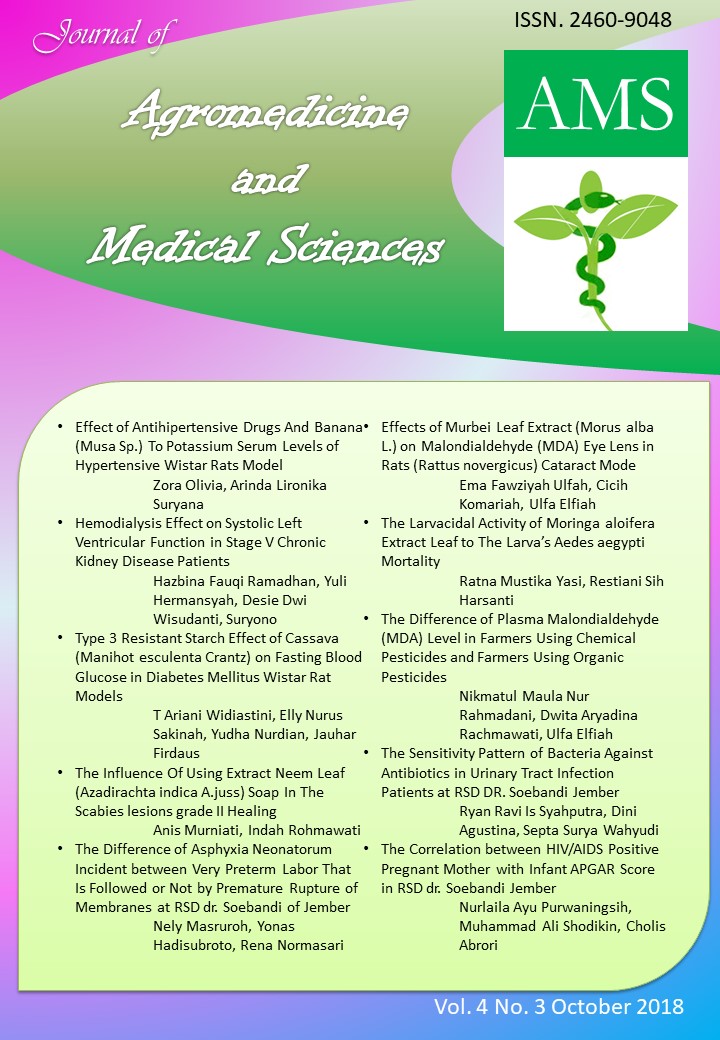The Difference of Plasma Malondialdehyde (MDA) Level in Farmers Using Chemical Pesticides and Farmers Using Organic Pesticides
DOI:
https://doi.org/10.19184/ams.v4i3.6794Abstract
Many farmers still use chemical pesticides. Chemical pesticides inside the body will form free radicals that will bind to unsaturated fatty acids (cell membrane structures) that cause increased levels of malondialdehyde (MDA). Organic pesticides can be used as an alternative to control pests. Organic pesticides leave no residues to plants and the environment. This study aims to determine the difference of plasma malondialdehid (MDA) levels in farmers who use chemical pesticides in Dawuhan Village, Tenggarang Subdistrict, Bondowoso Regency and farmers who use organic pesticides in Lombok Kulon Village, Wonosari Sub-district, Bondowoso District. This was an observational analytic research with cross sectional research design conducted on 30 farmers who use chemical pesticides and 30 farmers who use organic pesticides. Blood sampling was taken from Mediana cubiti vein. Measurements of plasma malondialdehyde (MDA) were performed using the TBARS method. Based on the result of Unpaired T-test, it was found that p < 0.001 which showed significant difference in plasma malondialdehyde (MDA) level in farmers using chemical pesticides and farmers using organic pesticides. The plasma malondialdehyde (MDA) level average were higher in farmers using chemical pesticides.
Keywords: Chemical Pesticide, Organic Pesticide, Plasma Malondialdehyde






















